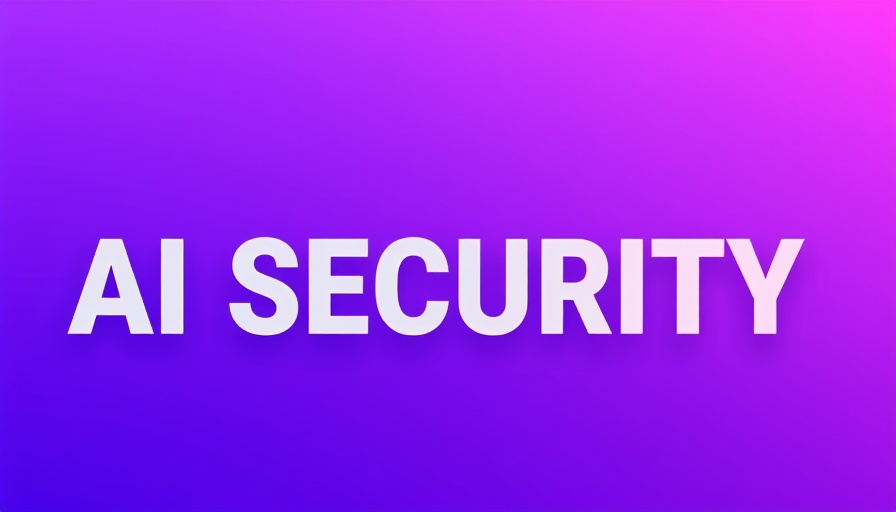
Understanding the Modern Landscape of Cyber Threats
As the digital landscape evolves, so too do the threats that businesses and individuals face. In a recent episode of the Security Intelligence podcast, the discussion revolved around multiple topics, including AI-driven ransomware, the end of groups like Scattered Lapsis Hunters, and alarming trends in software supply chain security. With the advent of sophisticated AI technologies, the nature of cybercrime has undergone dramatic changes, affecting how organizations must approach their defenses.
In 'AI ransomware, hiring fraud and the end of Scattered Lapsus$ Hunters', the discussion dives into critical cybersecurity threats, prompting a deeper analysis on our part.
The Rise and Potential Fall of Scattered Lapsis Hunters
The group known as Scattered Lapsis made headlines for its audacious tactics, with claims of attacking airlines and framing their actions as a "war on power." Yet, recent announcements indicate a shift, suggesting they may be going dark. However, experts like Dave Bales believe this is just a ploy. Historically, cyber threat groups have often claimed to disband only to return stronger and more cunning.
This trend illustrates a vital point: with rapidly changing technologies and tactics, cybercriminals are likely to adapt rather than disappear. The rise of AI tools and automated methods facilitates a resurgence in malicious activity, making vigilance essential for organizations.
AI-Powered Threats: The Anticipation vs. Reality
AI technology isn't just a tool for good—it poses growing risks as well. The discussion featured a proof of concept for AI-powered ransomware called Prompt lock, which demonstrated the potential for AI to orchestrate entire attack campaigns autonomously. Experts argue that while this technology can enhance cybersecurity efforts, it simultaneously opens doors for opportunistic attackers.
As Michelle Alvarez pointed out, the accessibility of such technologies creates opportunities for a wider range of attackers—those who lack the technical skills to execute sophisticated hacks can now utilize AI-driven methods that lower the barrier to entry.
System Vulnerabilities and Software Supply Chain Security
In an unsettling report about the state of software supply chain security, researchers revealed that significant vulnerabilities could impact operational technology. Of the 670 identified vulnerabilities, nearly half were classified as critical. This alarming statistic underscores the importance of implementing robust security measures as supply chains become more interconnected and complex.
Experts call for better transparency and monitoring mechanisms within software supply chains, similar to the strict regulations surrounding food safety. Every software package should carry a pedigree, detailing its origins and the individuals who contributed to its development, allowing organizations to better mitigate risk.
Innovative Cybercrime: The Business Identity Compromise Trend
Another topic of concern is the rise of Business Identity Compromise (BIC), which involves scammers posing as legitimate employees, fueled by AI-generated identities. As remote work becomes the norm, the opportunities for impersonation have increased, complicating traditional security measures. David McMillan highlights that this shift heightens the risks associated with hiring practices, emphasizing the necessity for organizations to adapt.
Awareness and education are crucial in combatting BIC. Organizations must implement rigorous screening processes and educate their human resources teams to identify these sophisticated scams before they can infiltrate company structures.
The Hope of Oversight and Regulation for AI in Cybersecurity
The discussions highlighted vital concerns regarding how quickly bad actors can adapt their strategies amidst technological advancements. As organizations leverage AI for efficiency and efficacy, parallel strategies need to unfold for cybersecurity to safeguard against emergent threats.
Moving forward, it becomes increasingly important for African business owners, policymakers, and educators to engage in conversations about AI policy and governance in Africa. By understanding the nuances of how AI can be both a tool for advancement and a vector for cyber threats, stakeholders can foster a more secure digital environment.
In conclusion, it is imperative to remain vigilant and proactive in this ever-evolving landscape. The ongoing dialogue about cybersecurity, especially regarding AI, must continue to adapt and grow, providing a framework for informed decision-making and strategic planning against potential threats.
We encourage you to join the conversation about AI policy and governance for Africa and stay informed about the latest developments in cybersecurity. The more we engage and share knowledge, the more resilient our community can become against cyber threats.
 Add Row
Add Row  Add
Add 




Write A Comment